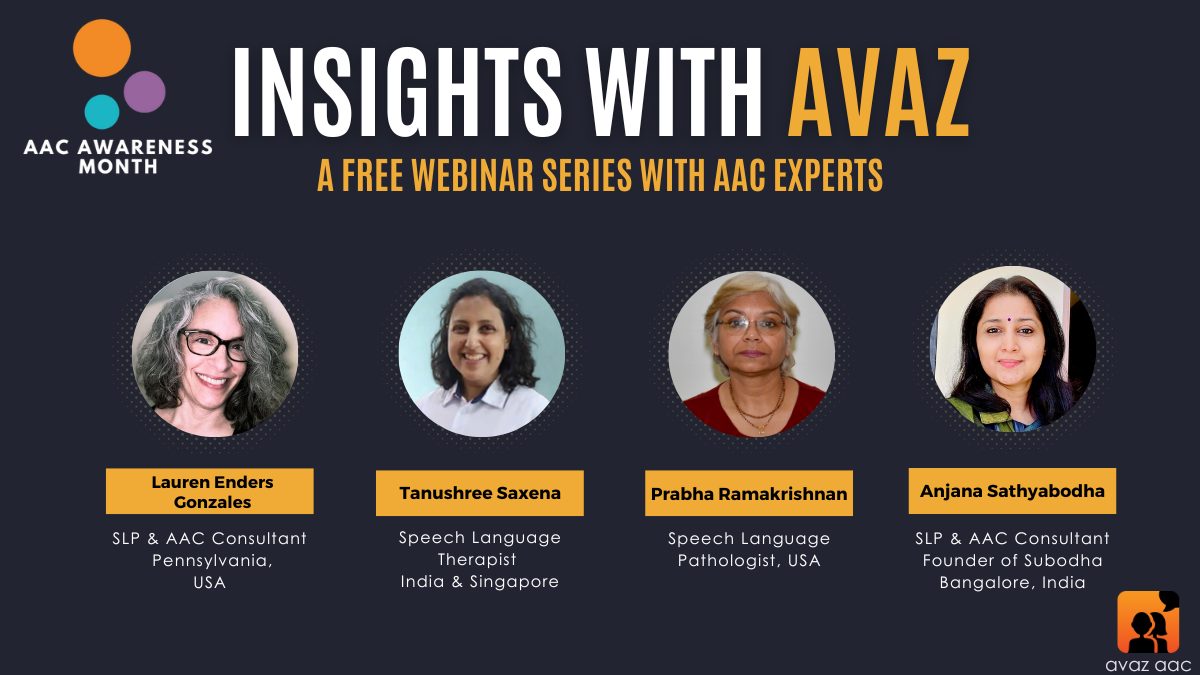How does the human mind learn a new word? It is a truly fascinating and complex process. Understanding this process may help in better supporting emergent communicators. In this article we shed more light on how language acquisition happens through novel word learning.
Vocabulary is an important aspect of language learning. Language does not always mean spoken language. The main motive of a language is communication. Learning to communicate helps children understand feelings, express emotions, think, solve problems, develop and maintain social relationships and evolve into a functioning adult.
Novel word learning is researched extensively due to its importance in language acquisition. The mechanism by which our brains learn a new word is a complex process. The process can be broadly thought of as:
- Introduction to a new word
- Mapping the word to an object or action or an attribute
- Categorisation
- Retention and recalling
- Reproduction
Introduction to a New Word & Mapping


Various parts of the brain are involved in this process. Children are introduced to words incidentally and intentionally. Their brains start mapping them to an object, action or an attribute based on the context. Essentially the object, action or an attribute is an imagery inside the brain if we think of it. Children are known to grasp novel words through visual cues such as pointing using fingers and eyes.
Categorisation
Another interesting process in language development is categorization. The brain employs constraints when exposed to a new word. It may assume that the word denotes the entire object rather than its parts. For example, we show an animal and mention the word ‘tail’. The brain will map the word ‘tail’ to the entire animal and not just the tail. Then comes the categorization. The next time we mention tail in the context of a different animal, the brain will categorize the imagery along with the previous animal’s image. Another example is a bowl of soup. The brain associates the label soup as a whole along with the bowl and soup. Hence, if we were to introduce a bowl of ice cream at some other occasion, the brain will tend to categorize ice cream along with soup. Studies have also found that both toddlers and adults were more likely to categorize an object by its shape than its size or color.
Retention and Recalling


The next stage in learning a word is retaining the mapped word in the memory and recalling the word. A learner is easily able to recall a novel word when it reoccurs in the same context. This is similar to how we are much more likely to remember a person’s name, if we meet the person again in the same place, in the same kind of clothing. Research shows that images and animacy (liveliness) can have an advantageous effect on conscious storage of information. Semantic mapping has a positive impact on novel word recollection. Using image games can help create semantic maps – a way of mapping and grouping words together as a means to remember the meaning.
Using images can also ease the understanding of other grammatical constructs in a language like prepositions, clauses etc.
Reproducing the Word
The last stage is the reproduction of the learnt words and concepts. This is an important phase because this is where active positive reinforcement usually happens. In general, children with typical language formation will have phases like cooing, babbling, saying single syllable words, coining words together etc., and they understand and learn more than what they can say. Children with speech disabilities face difficulty in reproducing words that have already been mapped. Having a speech deficiency is unrelated to the ability to connect a word to what it refers to in most cases. The problem for children with those deficits arises only when trying to convert that mental representation into verbal speech.


AAC’s Role in Novel Word Learning
Alternative communication techniques can help a great deal in such cases by encouraging communication. This will motivate the child to express, take feedback and learn. Positive reinforcement is a critical part of any learning process. Caregivers should use alternate techniques that help literacy building explicitly. Augmentative and Alternative Communication (AAC) tools can improve outcomes of speech therapies by serving as a means to express and derive motivation to communicate. As the learner and their partner go further in the learning process, they can further improve upon the tools and therapies they use. It helps in building a relevant context which in turn improves the learning process.
If you enjoyed reading this article about Language Acquisition, you may also enjoy reading about Gestalt Language Processing. Click here to read more!
Reference
- Marge Blanc – Natural Language Acquisition on the Autism Spectrum: The Journey from Echolalia to Self-Generated Language, 2012



